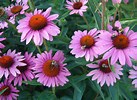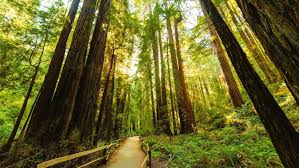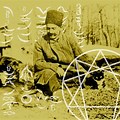The Sanctity of Plants




The Sanctity of Plants
People have always been spiritual, at least we can say so from looking at palaeolithic cave art and many images and objects people have created since that time, say 30,000 years ago. Indeed, spirituality has been the drive of much, if not most, culture and art through out time - think of the temples, sculpture and paintings. People used to believe so sincerely an afterlife that they made them sure their relatives were buried with goods they would need there, including sometimes a fortune in gold jewellery.
Today we may question the existence of an afterlife, and any jewellery goes in the will. Sometimes, we don't seem very spiritual at all . Yet, even we feel it strongly - there must be something else....
Where does this spirituality come from? put another way - what has made people think there is a life after death, and an intelligence that embraces the universe? Some sceptics would say that spirituality is just an ongoing tradition or superstition - that people don't have spiritual experiences, they just think they do.
These people can point to certain evidence. For example, the crystal in granite, being radioactive, cause brain stimulation including hallucinations, which may explain why it was used to build the neolithic dolmens (shelters) and to cover the walls of important rooms, like the King's chamber in Chepos pyramid in Egypt. People sat in these places and 'tripped out' - more or less like an acid trip (LSD).They thought they were having spiritual experiences, but may have been playing with their own minds.
The same sceptical attitude could be taken towards the spiritual use of sound, dance and plants. Sound, in the form of chanting, singing, or the repetition of mantras, sets up a vibration which changes the brain functioning and could cause a 'spaced out feeling'. Dance can do the same thing. Certain plants are psychoactive - they have an effect on the mind or psyche - and have been used by shamans for millennia, from South America to Siberia, to facilitate a state of trance, and another perception of reality. Some say these activities gave a false impression of 'spirituality' and fear and superstition did the rest.
This is a very one -sided point of view, for there are many other types of spiritual experience which involve neither stones, sound, dance nor plants. The basic spiritual experience is love, with some people falling in love after a very long time of knowing each other or instantly - seeing a stranger across a crowded room. When that loved-one is far away, they can be thought about, scanned for on the distant horizon, located and their spirit brought into the heart.
We seem connected in a way in a lay that defies the laws of place. Love is spiritual. Also nature is spiritual, with many people saying their strongest feeling of spirituality is when out amongst nature, on a mountain top perhaps, admiring the view, overcome with a strong sense of there being a beneficent intelligence watching over us all.
Many people have spontaneous spiritual experiences, when they suddenly 'get it' and become devout. Others have near-death experiences, see the other side, and come back certain of an after life. People hear voices - including some of the central characters in the Old Testament - when they're just walking along, not expecting revelation. And people have been bumping into angels for millennia.
It's because the spiritual realm is there that we have this thing called 'spirituality' . When people use stones , sound dance and plants, they are seeking to make the connection with something that they know is already there. These things are not the rason for spirituality, but a means to spirituality. People want to reconnect, and they feel they need help.
When Aaron burnt incense every morning and evening, it was not to create two little pockets of 'spiritual experience' within the day. Aaron felt they spirit all day long. He burned incense to concentrate his mind on the subject....and because God had told him to. Likewise, Buddists don't burn incense to receive the enlightment of Budda's words, they already know them, and believe them to be the right path to follow in life: incense is burnt to experience the enlightment directly, to connect with something they know is there.
Certain plants have been chosen as spiritual aids by people living thousands of miles apart, on different continents, in different millennia. Cedar is a case in point. The temple of Solomon in Jerusalem was built with cedars from Lebanon, and it is possible the Hebrews extracted an oil from the wood. In India, cedar is used to induce trance, while in Native American culture it is said to have the ability to counteract negative forces. Why should these, and other peoples choose cedar? Is it because it smells good: or because it does something in the spiritual realm: or because it does both?
Plant materials have long been used in spiritual practice, and the more fragrant they were, the more spiritual they were considered. This may be because fragrance transports. You can be in a place feeling very uncomfortable, with chaos and noise all around, then close your eyes, inhale a particular fragrance, and bypass it all, reconnecting with the great cosmic whole, and peace. It's like a private vehicle silently and instanteously whisking you away to reconnection: fragrance can be a ticket to the divine.
Reference: The Fragrant Heavens: V.A Worwood
Plants that Feel and Speak-2
..






Plants That Feel And Speak - 2
When you think about it, this is not dissimilar to the way horticulturists and gardeners view plants in their care. Older plants possess an authority that seedlings do not. Also, each species has its own nature, and individuals within the species have their particular character.
We speak of animals in much the same way, describing a breed of dog as generally 'good' with children', but individuals within the species may not be good, with children in general, or with a particular child. Many Western gardeners 'tune in' to their plants in essentially the same way as do indigenous peoples. Looking at a bed of roses, next to a bed of hollyhocks, we might perceive each species to have a different emotional tone.
Each species looks different , grows differently, with different kinetic qualities and character - in much the same way as people have different characters. The more species we grow , and the longer we work with them, so our 'instinct ' about plants develops (as instinct develops over time when using essential oils
The difference between our approach and that of indigenous peoples is the way we learn about plants. We spend time reading gardening books , while they sit with a plant for hours, days even, getting to know it. They'll respectfully bring it little presents, in gratitude for what it offers and to let the plant know they care. They go to plants as a pupil goes to a wise person, to learn. Western horticulturists, on the other hand , often feel that they are the holders of information, and that it is their job to control the plant, which they see as their property.
We know, of course, from 'companion gardening' that plants can influence each other in terms of preventing pests and disease. This is often accomplished through scent, as aroma molecules from the plant waft over another, exerting their beneficial influence. Stephen Harrod Buhner relates an interesting anecdote on this subject in Sacred Plant medicine.
He was sitting with a lichen called usnea, which has powerful antibiotic qualities when suddenly the usually subtle 'feeling tone' of the usnea increased in intensity, Buhner felt his 'personal boundries' dissolving, and the plant appeared as a youngish man. The plant-man told him that usnea's primary role is to keep the earth's lung system healthy, by being an antibiotic for the trees on which it grows, adding that as a by-product of this intended role, usnea can also be used to treat individual human lung infections.
Imagine how much more we could learn about plant interaction, and how many new medicines we could discover, if more of us could hear what plants have to say. Plants are sensitive, sentient beings.
There has been a great deal of research in this area, starting in 1966 with the work of Cleve Backster, then a New York expert in the field of lie-detection working for law-enforcement agencies. One classic Backster experiment involved plant murder. He put two plants next to each other in a room, along with six of his students, who each picked a piece of paper from a hat; one of the pieces of paper carried instructions for the murder. The people with the five 'blank ' papers left the room with Backster.
In the room the 'murderer' ripped one of the plants to shreds . Backster then returned, attached the remaining plant to a polygraph machine, and called the students into the room, one by one. There was no response on the machine to the five innocent students, but when the murderer entered the pen flew across the paper as the 'silent witness' recognized the guilty party.
The implications of Backster's work on plants are staggering enough, but he has also done experiments with other life forms, including eggs, shrimps, and human mouth cells - the implications of which are equally amazing. Backster had to conclude that all nature is essentially unified and not separate.
The planet earth hums. It emits a low-frequency radio signal, the earth's 'vibration' which is known as the Shumann resonance, and it can be detected coming from trees. Researchers in America were curious to know whether this vibration could be altered with human thought and feeling, and connected an oak tree to a machine described as being not unlike those used to measure brainwaves in humans.
A group of people circled the tree and saying a traditional native American prayer, sent it love. The charts reportedly went off the scale. Although the measurements couldn't indicate whether the tree was happy to receive this love, or whether it wanted everyone to go away, clearly some form of interaction was taking place.
Plants respond to human thought, and to the human energy field . You can prove it for yourself in the following thought experiment devised by Marcel Vogel. Pick three leaves from the same tree or plant band place them by the side of your bed. (Vogel put them on glass, presumably so that he could view the underside without touching the leaves , but a sheet of paper will do.)
Each morning when you wake, concentrate on just two of the leaves , sending them love and pleading with them to live. Imagine them green and healthy-looking. Ignore the third leaf. don't touch any of them. After seven days the two chosen leaves should look fresh, while the ignored leaf should be shrivelled.
Do the experiment when you wake because that's when you're most physically and mentally relaxed. It's absolutely vital to approach this with a pure heart, because plants know what you think. Don't try to fool them because you'll only be fooling yourself. Expect the experiment to work.
Another classic experiment was originally devised by mathematician and healer Daphne Beall. Fill a container with water and energize the water by putting both hands around the container, without touching it. Relax and visualize white-light energy coming out of your hands into the container. Imagine the water becoming bright white; do this for ten minutes. Then put an organic, non-genetically manipulated tomato in the water.
Fill a second container with water, and put another similar tomato in that container without giving it any thought. Leave both containers overnight and in the morning take the tomatoes out of the water and place them somewhere, where they can sit for two weeks without being moved . make sure you have a way of remembering which is which. The tomato placed so briefly in the energized water will prove to have a much greater life span.
An energy connects us to plants. in some people the energy is very obvious, when they transform a neglected piece of earth, with fairy dust, into a resplendent garden. We call this 'having a green thumb'. Almost everybody, natural gardeners or not, have empathy for the glory of nature.
Human-plant interaction involves the study of light, physics, astrophysics, metaphysics, botany, biology, harmonics, electromagnetics, hydrology, minerology, and a dozen other things, including neurology, philosophy, spirituality, theology and psychology, to name but a few. Perhaps that is why it is so little researched - we don't know whose academic territory it is! The answer may be of course that it is everyone's territory, because there is only one territory, in that we are all part of the connecting whole.
Reference: Fragrant Heavens/V. Worwood
The Singing Forest-2





The Singing Forest-2
In British Columbia, Canada, the drive to harvest large dimension lumber is in full swing, as logging companies race to bring down the last remaining trees before politicians accept what environmentalists have been telling them for years and bring the harvest to an end.
Standing in these forests is scary. You can hear the drone of mechanical saws and you know you're standing among doomed giants. These magnificent trees are silently performing crucial ecological tasks for the whole living planet; they have lived through so much of human history and yet are helpless to stop our saws cutting through them. This helplessness, coming from such powerful, massive living things, is infinitely sad.
I was intrigued to hear about a woman who claims to have heard the forest sing. Living deep in a forest in British Columbia, where the loggers cut 1,000-year-old trees, Gladys McIntre earns a living planting seedling trees. In June 1990, in part of the cedar wood forest called Howser Creek, Gladys found herself thinking about the 'immense verticality' of the trees when 'a profound vertical alignment took place in me in response; and suddenly I felt about twelve feet tall.
I wondered for a moment if this was soul consciousness, then I was struck in my solar plexus by an impact of sound, in range and tone unlike anything I had ever heard before! Emanating from the forested hillsides across the valley, it was unquestionably a great hymn of adoration, of joy in Creation and praise to the Creator! Words cannot possibly express the magnitude of this joyous sound, nor my absolute awe at witnessing it.'
But from being a song in praise to the Creator, the song abruptly changed from 'overwhelming joy to abject sorrow'. Gladys writes: 'My cognitive mental faculty seemed to be translating information received by my soul from that incredible presence at worship over there.' It said 'O noble and worthy, exploiters and conquerors, have mercy, have mercy, do not end our singing which allows the conditions necessary to all life on the planet as you know it.'
I came away thinking that if the forests do communicate , Gladys is the right person to hear it. But she is not the only one. In another ancient forest a young woman and her boyfriend went to sit on a splendid mountain ridge to admire the forest view. But instead of feeling glad to be in the splendour the girl became overcome with a sense of panic and fear coming from the forest. Sick with anguish, she had to return home. Days passed, but the sadness wouldn't go. The girl felt driven to return to that part of the forest, to try to understand why she had been so affected.
When she arrived she was horrified and stunned to discover the whole area had been clear-cut to the ground.
Although to 'civilised people' communicating with trees may sound bizarre, it is in fact something that's been going on for a long time . Indeed , trees have long been central to spiritual culture. In ancient Egypt, the 'word tree' was associated with a 'sycamore', possibly the sycamore fig that gave shade to the goddess worshippers in their 'groves'. Kabbalah, the mystical aspect of Judasim has its 'tree of life' and has traditionally been taught to men over fourty while they sat under trees.
In the last book of the new testament, revelations 22;2, we hear that the tree of life is in 'the midst of the street' in Heaven. Buddha received enlightenment while sitting under a tree. The ancient Assyrians had many tree cults, with the tree of life sometimes depicted as a cedar, fir, date, or pomegranate. The Chinese associated the tree of life with the peach, and in later times the Casia, while in Norse mythology it was the ash.
A Polynesian legend says 'out of this magic breadfruit tree a great goddess was made'. The sacredness of trees is universal, and this may not simply; be because they routinely offer their bounty, but because they have a spirit we can feel.
Reference://Fragrant Heavens/Valerie Worwood
Plants that feel and Speak







Plants that feel and Speak
Chatting to plants is a regular occurrence, even for royalty, and some plant africionados play them music, taking care to choose something they like.
Edward Bach, famous for his Flower Remedies, attributed certain medicinal qualities to plants because the plants themselves told him what they were. An entire Western healing system is thus based on plant communication, and has inspired further plant-human exploration. meanwhile, in many cultures it is considered quite wrong to become a healer without first having had dreams or visions relating to the plants to be used. In other words, the spiritual realm is seen as the source of accurate information.
Cultures that are very much in touch with the earth and all that grows in it believe unreservedly that plants have a spirit. Obviously a plant is unable to speak, so to communicate with it we have to get in to the spiritual 'space' we share with it. If you want to know what a plant can do , go to the source and ask it.
To indigenous people s, that's the logical thing to do . There are variations on this cultural theme ; with some people believing the spirit of the individual plant conveys the information; or that each species of plant has a kind of 'overall' spirit which communicates; or that there are a variety of nature spirits; or that it is the voice of the creator that speaks. These are all variations on a theme: you can speak to, or through a plant.
The Yaqui people of northwestern Mexico have a oral tradition going back 4,000 years, to 2000 bc. Around AD 1500, because of the oppressive actions of the Spanish conquistadors, the Yaqui were forced to make their sacred traditions secret. Seven lineages were chosen to preserve them , through sacred oral and family traditions. Through many subsequent generations the sacred way of the Yaqui was kept alive underground, as the bullets flew overhead. Now that we are older and wiser, hopefully, the knowledge can re-emerge. Indeed, it is time for us to know it.
Cachora Guitemea is a man who carries this knowledge, passed to him by his father and mother. A Yaqui traditional spiritual healer, Cachora is a highly respected native American elder. It was, then a great privilege for me to be privately invited to spend a few days in the Mexican desert with Cachora to learn about sacred plant medicine.
We were accompanied by both our daughters and the mutual friend who introduced us. Although Cachora is over eighty and has white hair you would never guess his age - either from his appearance or from his extraordinary energy. His face is lit up with joy that defies time. And, despite his boyish love of jokes, you never forget that you are in the presence of great wisdom and positive intent.
Cachora teaches that we must respect plants. Permission must be sought from the plant before picking it, and if the plant is required for ceremonial purposes sacred chants and mantras are said aloud, in honor of the plant or tree. All plants have souls and spirits that guard and protect the species. It is not that every individual plant has its own, but that there is a species-spirit, which has a place within plant heirarchy, depending on the sacredness of the purpose the plant is put to.
Cachora is quite plain about the underlying principles of haling herbs. He says that healing takes place when a person connects into the plant spirit, becoming the plant, and understanding its personality. using spirit as the method of transference, the plant's energy or healing properties are transmitted to the person.
Once the spirit of a particular species has come to be known, and its use and purpose memorized, its strengths and weaknesses understood, then in times of ill-health, as body, mind and spirit are one, by calling on the spirit and taking into one's mind the spiritual essence of the plant, healing can take place.
Plant life must be respected and spoken to, says Cachora, for it is part of the universe, part of ourselves, our heritage. I understand this to mean that everyone evolved through a plant, and through the plant cycle of crystalline life - we are all part of the same consciousness pool. Getting to know plants involves looking at them closely, communicating with them with honesty and integrity, and with gentleness.
Human thought is the greatest obstacle to plant communication. You have to get beyond thought, into empathy and feeling, through focus and concentration. On this amazing journey I encountered a magnificent six-feet-high white sage bush, a grandfather of the species which, having seeded many generations of plants, was an elder in its own right. So vibrant was it that the leaves seemed to send showers of sparks, but I was rather taken aback when the large bush bowed its body to greet us. As there was not a hint of a breeze I turned to my friend beside me to verify what had happened. I could tell from her wide-open eyes that she could! Then the sage spoke to me, in a silent block of communication, clear and precise.
There are many indigenous peoples in the world who feel the spirit in nature , and work with it, Certain themes emerge. One such idea is that some plants should not be picked because they are too sacred. - too old and valuable to their 'tribe'. Just like us, plants need their wise elders. They say you should ask a plant if it is okay to pick it. A plant may say no, it may agree - and it is respectful to explain who the plant is for, and what is wrong with them. The plant will then know it is being needlessly sacrificed.
Another is the general idea that the spirit of the plant is a communal one, shared by the species as a whole, so that when you communicate with a plant you communicate with its species-spirit. When I spoke to the large sage bush I spoke to the spirit of the species, but through the wise old bush who happened to hold a great deal of communal species wisdom and could express more information more clearly.
Reference: Fragrant Heavens/ V. Worwood
Articles-Latest
- Koran burning conviction sparks fury as blasphemy law 'returns to UK'
- Robert Francis Prevost - Pope Leo XIV
- Pope Francis' death follows recent health challenges. Here's what we know about how he died.
- Easter April 2025 - international Celebrations
- The Rule of the twelve psalms -Worthy is the Lamb
- Religion in Africa Before Christianity and Islam
- 6 The Origin of Yahweh
- Dumo Di Milano
- What Did the Crow Tribe Believe In: Discover The Beliefs!
- 7 Reasons Historic Christianity Rejects the Book of Enoch
- 8 Breathtaking Mountain Monasteries Around the World
- Ethiopian Bible is oldest and most complete on earth
- Muhammad Muhammad was a prophet and founder of Islam.
- World Day of the Poor – SVP Christmas Campaign 2024
- Pope Francis to open 5 sacred portals on Christmas Eve — for a ritual that’s never been done before
- The 144,000 in Revelation
- Over 73 dead bodies 'used for meditation', 600 crocs in a pond, found in two Thai temples
- Occultism: Western Occult Tradition
- What is a Mudra
- Blood Sacrifices: Ancient Rituals of Life and Death
Articles-Most Read
- Home
- Let There Be Light
- Plants that feel and Speak
- The Singing Forest
- The Singing Forest-2
- Introduction
- Meditation
- Using Essential Oils for Spiritual Connection
- Heaven Scent
- Plants that Feel and Speak-2
- Purification
- Making the Spiritual Connection
- Anointing
- Essential Oils: The unseen Energies
- The Sanctity of Plants
- The Aroma Of Worship - Introduction
- The Aroma Of Worship-Foreward
- Methods Of Use
- Spiritual Blending
- Handling and Storage






